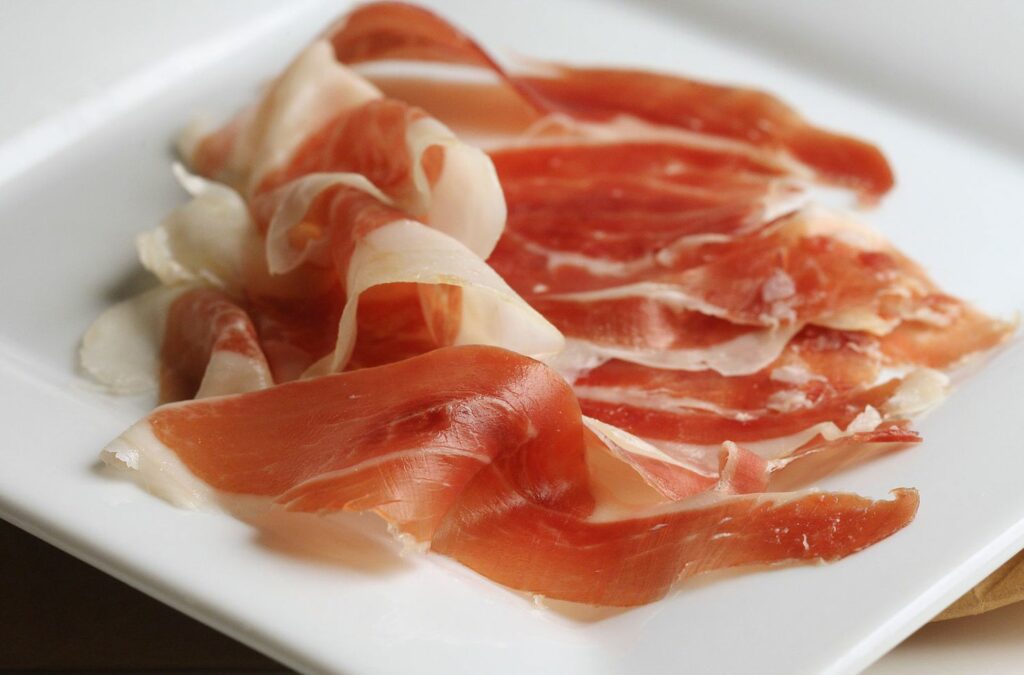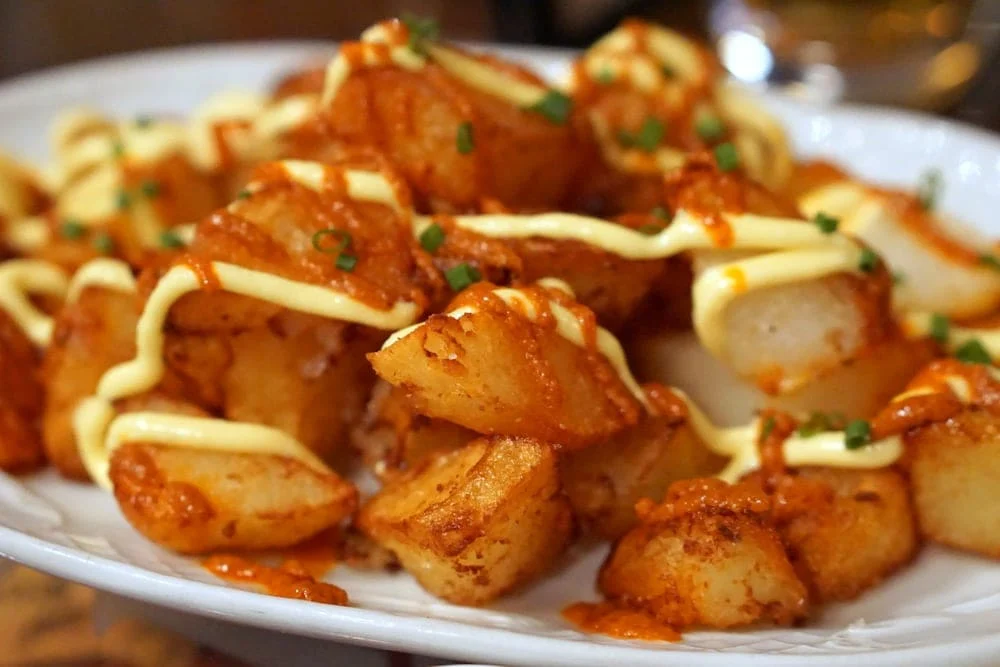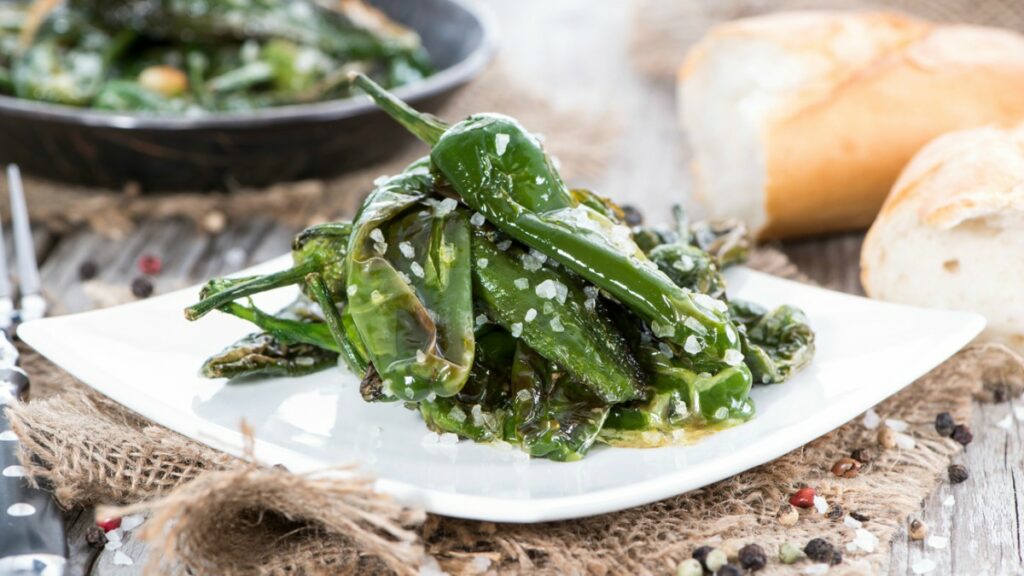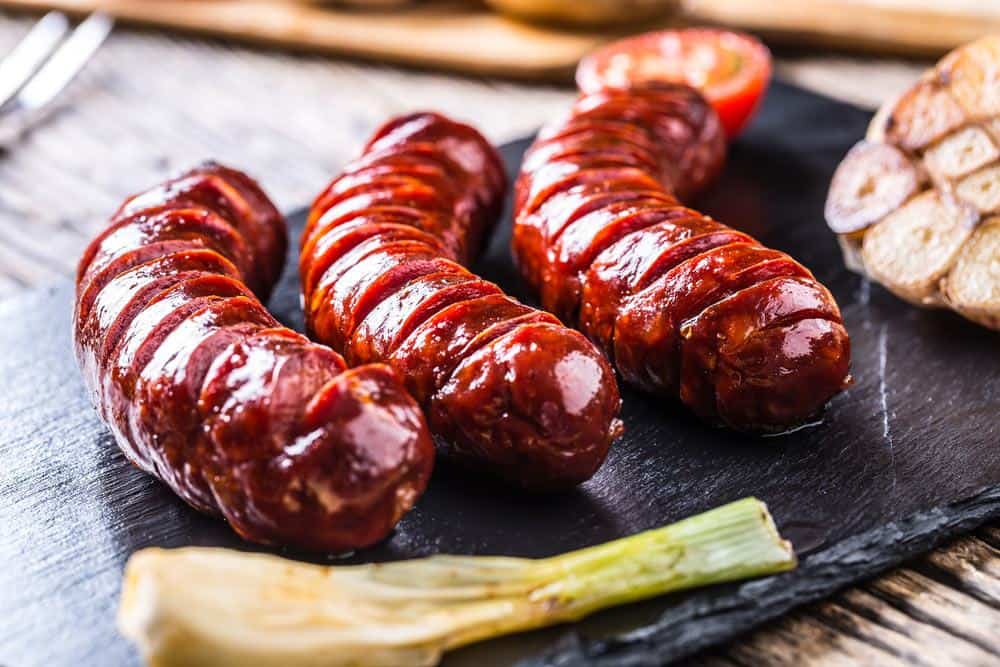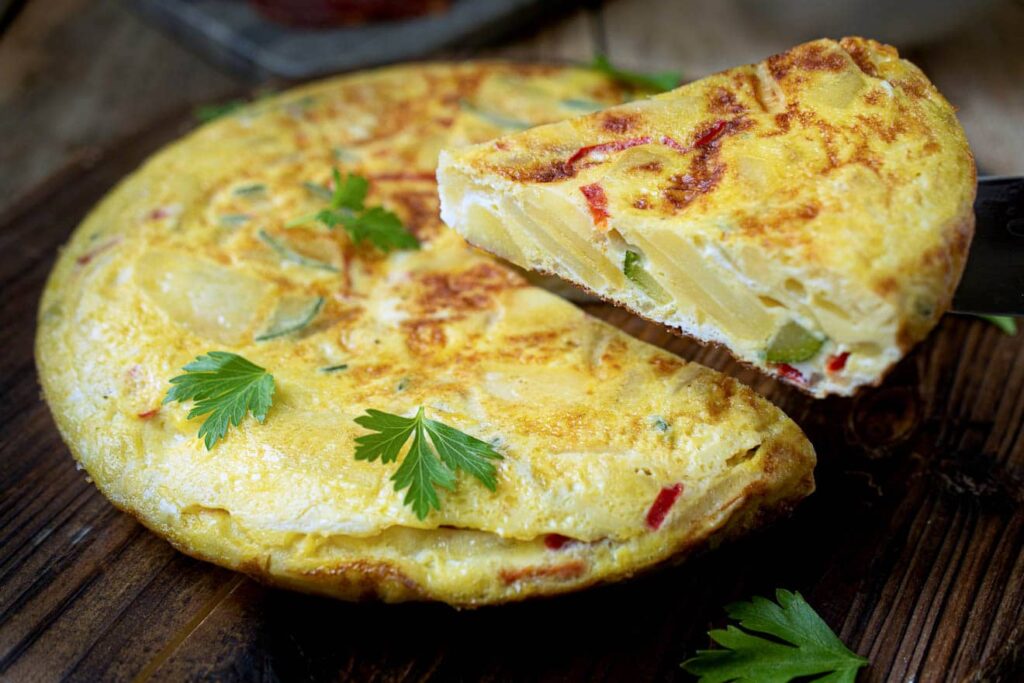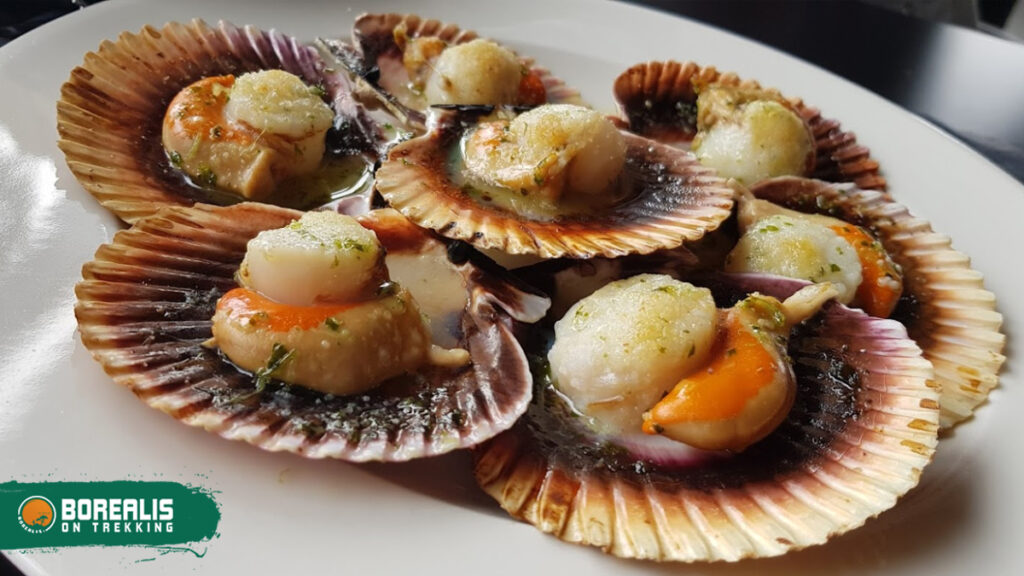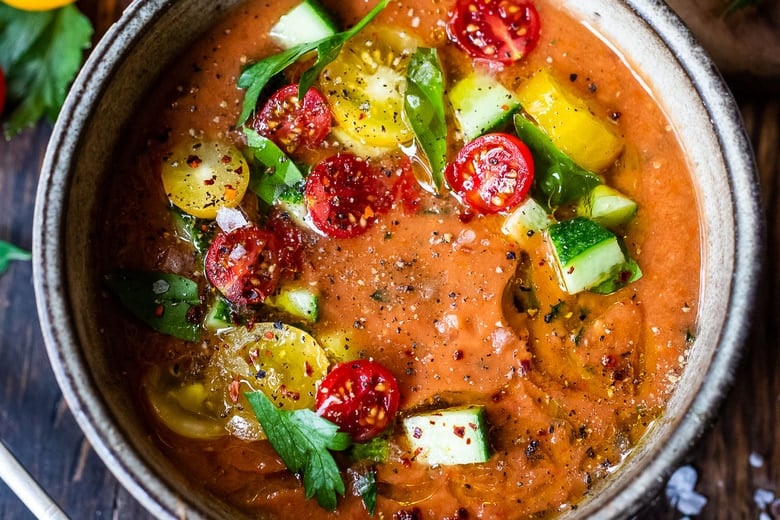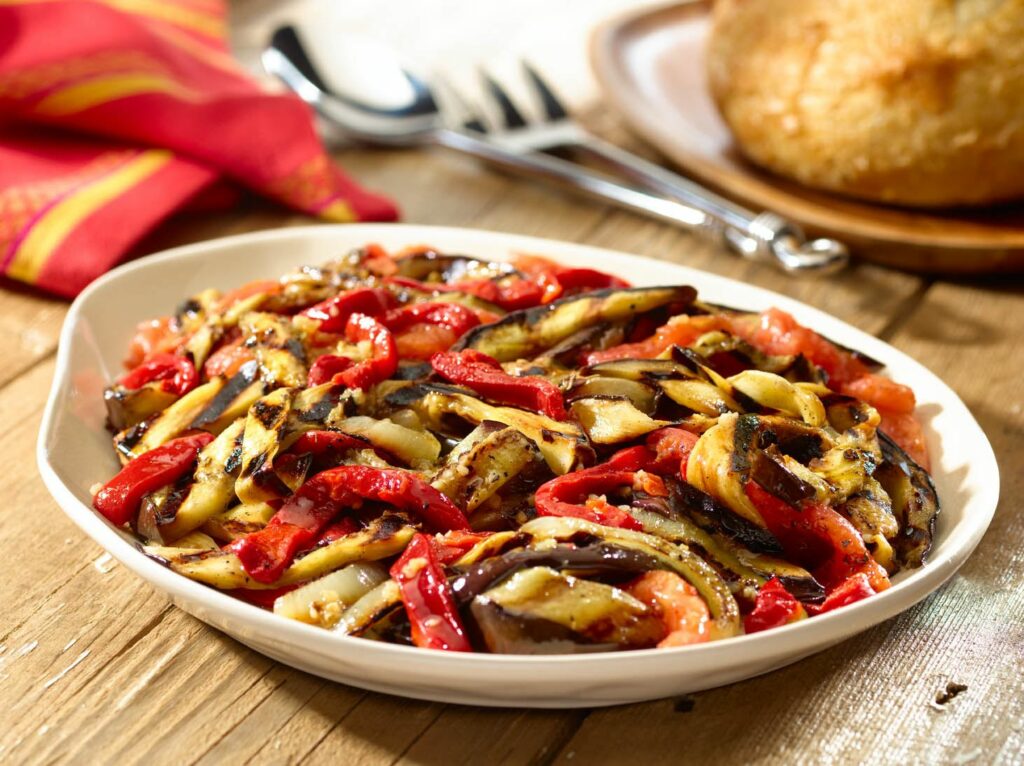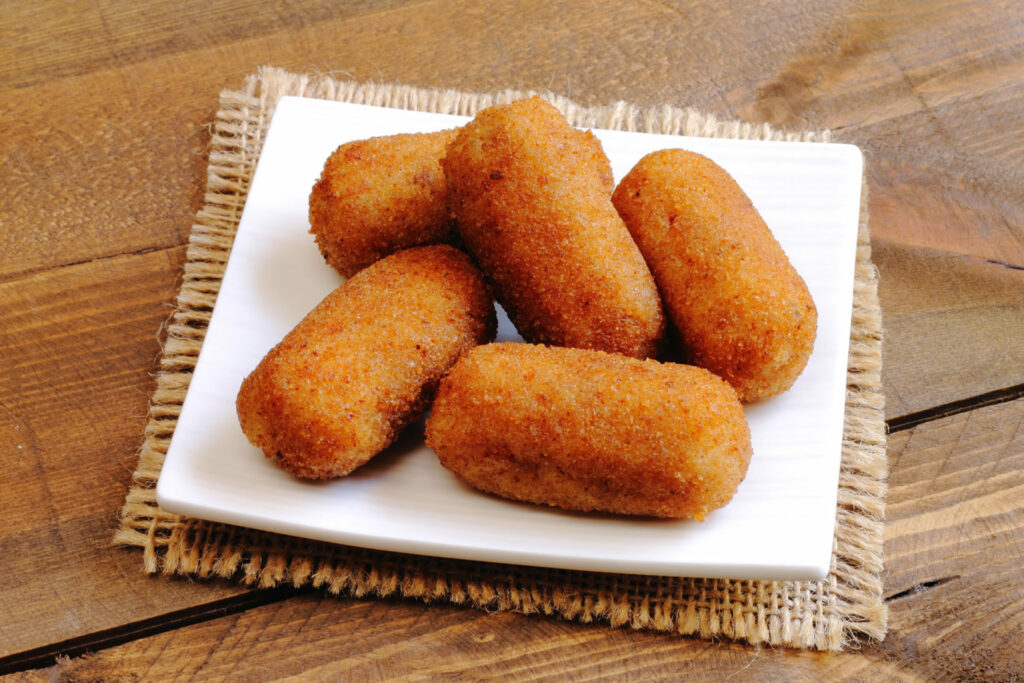Are you a foodie who loves exploring new cuisines? If yes, then Spain should definitely be on your list! Spain is known for its vibrant culture, rich history, and mouth-watering food. From tapas to paella, Spanish cuisine is a delight for the taste buds. In this blog post, we have curated a list of the top 10 authentic dishes that you must try when visiting Spain. Trust us, once you try these dishes, you’ll be hooked for life! So, come along, and let’s take a culinary journey through Spain.
Table of Contents
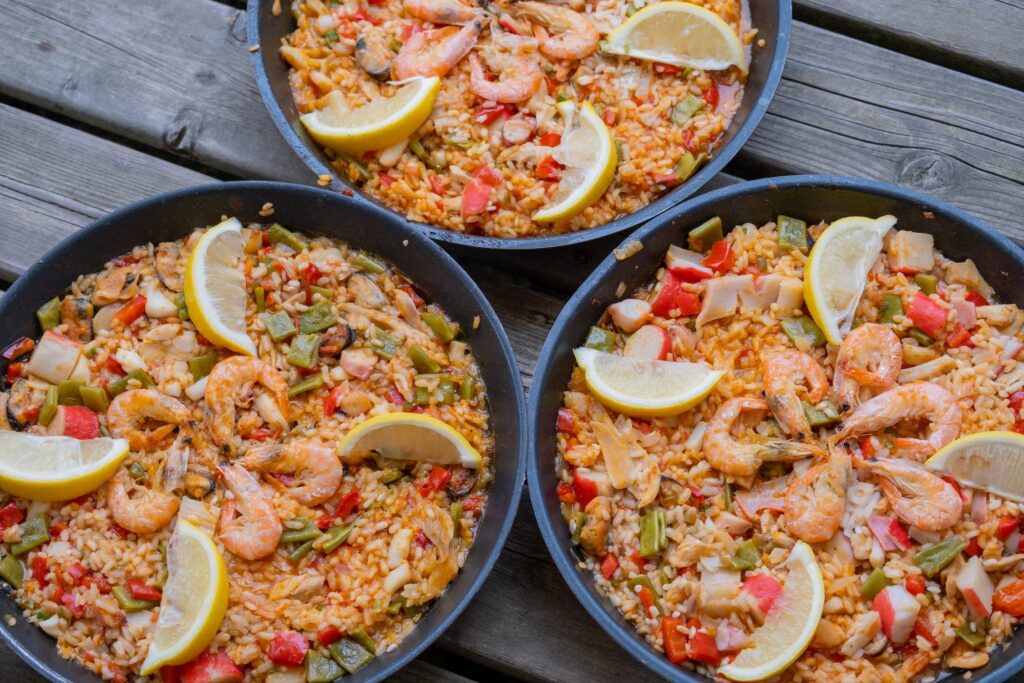
Paella
We start with a meal that is well-known not only in Spain but also throughout the world. Paella is a product of Valencia, a stunning city. It’s a rice dish from Spain made with a unique variety of round rice. The most popular version is paella de marisco, or seafood paella. The origins of Paella can be found in the 10th century. Rice was first introduced to Spain by its Muslim inhabitants. But the typical paella recipe didn’t gain popularity until the 19th century. A large, circular, shallow pan is used for cooking the Paella, and it works best over an open flame. Because of this, Paella is the ideal dish for feeding big crowds. The golden color of the rounded rice in paella results from the olive oil base. It is then traditionally seasoned with saffron and rosemary. Due to the abundance of fresh fish from the Mediterranean, seafood paella has recently grown in popularity. A delicious flavor is created by the soft meat and the warmth of the rice.
Jamon Iberico
Spain is one of the top countries for ham production and consumption. Over 35 million hams are produced nationwide each year. Once you taste Jamon Iberico, a cured ham meal, you won’t find this number shocking. You can find this traditional Spanish meal, a big part of Spanish culinary tradition, all across the country, with some of the more well-known variations being found in Madrid. The excellent Spanish meal is undoubtedly popular because of its simplicity. The black Iberian pigs used to make the ham are located throughout the peninsula. Before serving, it is salted and cured outside for up to 3 years. Jamon Iberico is one of those incredible Spanish delicacies you must have while traveling, much like Paella. It’s a straightforward dish made by rubbing toast pieces flavored with tomatoes and garlic before dipping them in olive oil and adding the cured ham. This can be found in any tapas restaurant in Spain.
Patatas Bravas
Next are the Patatas bravas, or “brave potatoes,” a mainstay among the small meals that make up a traditional tapas menu. They get their name from their spicy sauce, which is unusual in a country that generally avoids fiery food. Everywhere the potatoes are served, they are cut into cubes and shallow fried. The sauce can be made in various ways, including garlic mayonnaise and pimiento, which is smoked paprika. While Paella is undoubtedly Spain’s most well-known dish, it is also a special occasion dinner, best enjoyed with loved ones. This favorite meal was created in Madrid long after Spain had taken control of the Inca empire in the 1540s and had restored their agricultural products, including tomatoes. But why is it a well-liked tapas dish? A platter of fried potatoes and the rich sauce charmingly affect the tastebuds. Additionally, it is widely available, incredibly cheap, and served at almost every tapas restaurant in the region.
Pimientos de Padrón
Pimientos de Padron, another meal frequently served as a tapa, is a classic Spanish delicacy and one of Spain’s more intriguing dishes. The Padrón pepper comes from the Spanish town of Padrón, located in Galicia. These peppers are particularly distinct due to a few qualities. Their shape comes first. The length of a padrón pepper is only two inches, and it is twisted. Their taste is their second distinctive quality. They are typically mild peppers. The method of growth determines how spicy or mild the pepper is. You find yourself in the fascinating circumstance of not knowing how hot each Padrón pepper tastes until you chew it. Traditionally, Pimientos de Padrón is cooked with the stalk still attached in heated olive oil till they wrinkle. After that, salt and olive oil are sprinkled over the wrinkly, vivid green peppers. After picking it up by the stalk, you take a mouthful and enjoy the fantastic, intense flavor.
Chorizo
Worldwide availability makes chorizo one of the most popular elements in Spanish cuisine. But the origin of the sausage dates to Spain in the sixteenth century. The excellent chorizo is now available in spicy, sweet, smoked, and even vegan forms, thanks to the five centuries that followed. To return to its origins, traditional chorizo is a fermented, preserved, and smoked sausage usually made from pork. After that, it is cut up and seasoned with salt, paprika, garlic, and olive oil. Throughout Spain, chorizos are divided into two categories: Picante, which are spicy, and the sweet Dulce. You may grill it and serve it with tomato sauce and wine on the side, or you can eat fresh cut on a tapa.
Spanish Tortilla
Tortilla means “little cake” in Spanish. Because the layers of sliced or diced potatoes resembled the layers of a cake, the Spanish tortilla was given this name. The classic dish consists of eggs and potatoes and is often served at room temperature at tapas bars, eateries, and homes. You’ll find firmer and fully cooked tortillas lying on a slice of bread at pintxos bar, or you might discover that it’s the complimentary tapa you get when you place your first drink order. In the end, no two tortillas are precisely alike. Every cook has their recipe, and every family uses their methods; however, each one is delicious.
Zamburinas A La Gallega
On number seven is Zamburinas a la Gallega, one of Spain’s top seafood dishes, originating in the country’s northwest region, Galicia. Even while the town on the Iberian Peninsula is well known for its large wooded valleys and undeveloped beaches, the ocean gives the community one of the most well-known Spanish dishes. The renowned Galician scallops known as tambourines a la Gallega come from the margin of the Atlantic Ocean. While there are two varieties of scallops in Spain, the Zambruinas, or variegated scallops, are known for their flavor and distinctive shape. The excellent seafood in the adjacent Basque Country is also well known. Ajoarriero, a fiery codfish dish, is among them. This delectable stew includes cod, shredded tomatoes, onions, smoked ham, and potatoes.
Gazpacho
Spanish chilled soup called gazpacho is made using ripened but fresh tomatoes and other in-season vegetables. Prepare an excellent batch of gazpacho during the year’s warm months to use up garden veggies. Gazpacho is a traditional cold Spanish soup ideal for hot summer days. Traditionally, fresh tomatoes, cucumbers, red onions, and garlic are used in its preparation. Gazpachos are prepared in various delectable ways; for a Californian twist, garnish the soup with some sliced avocado and serve it with crispy toast. In this meal, tomatoes take center stage, but they can also complement other summer fruits like watermelon. Some gazpachos, like the cold soup known as “white gazpacho,” made with bread, almonds, garlic, grapes, cucumber, and olive oil, are produced without any tomatoes.
Escalivada
In Spain, Escalivada is a popular vegetarian option on menus. This is a gift for vegan tourists or anyone who wants to mix things up in a country that focuses on meat and seafood. The vegetable-heavy dish is Catalan, although it’s also often consumed in Valencia, Murcia, and Aragon. Escalavida includes grilled veggies with a great smokey flavor, such as eggplant, onions, and peppers. Initially, the veggies are either finely sliced or thinly layered. Then dipped into a mixture of sherry vinegar and olive oil, allowing each to welt and absorbs the flavors. Then they are typically roasted or barbecued, while the more popular modern method is to wrap them entirely in foil and bake them. You can devour them just as they are after cooking. Alternately, spread olive oil and minced garlic over a slice of toast before adding the cooked vegetables. Pair it with a few pieces of Manchego cheese and Cava, a Spanish wine, for an extra taste of Spanish cuisine.
Croquetas
Lastly, the Croquetas, another trendy option on tapas menus all around Spain, feature a crisp texture and mouthwatering contents. Croquetas are made of flavorful dough. There are numerous fusions and variations to taste. Croqueta fillings like cheese or serrano ham are especially appreciated. Some folks will mix up other vegetables, such as onions, garlic, and spices, for a rich flavor. The dough is formed into tiny cylinders after it has slightly cooled. Then, flour, egg, and breadcrumbs are sprinkled on top of those delicious bite-sized delights. They are finally cooked in heated olive oil till they get a pleasantly crispy and milder taste. The croquetas are a delightful starter that goes nicely with any tapas meal. You keep returning because they are filling and mouthwatering!
